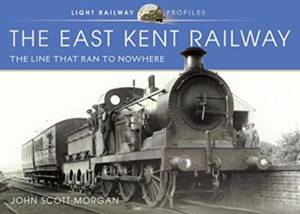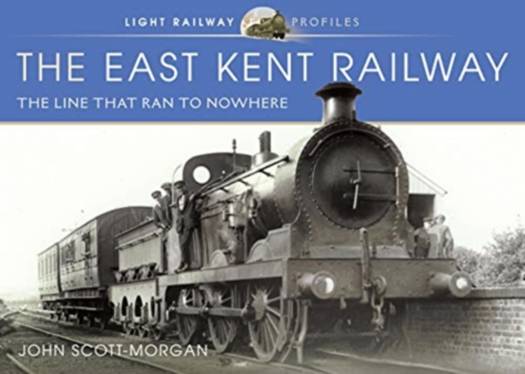
- Afhalen na 1 uur in een winkel met voorraad
- Gratis thuislevering in België vanaf € 30
- Ruim aanbod met 7 miljoen producten
- Afhalen na 1 uur in een winkel met voorraad
- Gratis thuislevering in België vanaf € 30
- Ruim aanbod met 7 miljoen producten
Zoeken
Omschrijving
The East Kent Railway was one of Britain's less well known light railways, a part of the Colonel Stephens group of lines, the East Kent Railway was meant to open up the newly discovered Kent coal field and help to make its shareholders wealthy, however things took a different turn, when the projected colliery's along the line did not materialise the way the promoters had first envisaged.
The only colliery to produce quantities of coal being Tilmanstone near Shepherdswell, which opened in 1912.
There were other pits started along the formation of the line from Shepherdswell to Wingham, but in the cases of the other pits, only the surface buildings or test shafts were constructed, before the work was abandoned.
This was largely due to flooding and the poor calorific quality of East Kent coal, which had to be mixed with other coal to be effectively used.
There were four colliery's completed in Kent, the East Kent Railway only served one of them and this together with the other three lasted until the latter part of the 20th century.
The railway operated a loss making passenger service to Wingham and for a few years to Sandwich Road halt on the line to Richborough Port line, however the service to Wingham Canterbury Road came to an end in October 1948, after British Railways had taken control.
The East Kent Railway lasted through two world wars and was nationalised in 1948, becoming part of the Southern Region of British Railways, it closed to traffic in 1984, during the coal strike.
The only colliery to produce quantities of coal being Tilmanstone near Shepherdswell, which opened in 1912.
There were other pits started along the formation of the line from Shepherdswell to Wingham, but in the cases of the other pits, only the surface buildings or test shafts were constructed, before the work was abandoned.
This was largely due to flooding and the poor calorific quality of East Kent coal, which had to be mixed with other coal to be effectively used.
There were four colliery's completed in Kent, the East Kent Railway only served one of them and this together with the other three lasted until the latter part of the 20th century.
The railway operated a loss making passenger service to Wingham and for a few years to Sandwich Road halt on the line to Richborough Port line, however the service to Wingham Canterbury Road came to an end in October 1948, after British Railways had taken control.
The East Kent Railway lasted through two world wars and was nationalised in 1948, becoming part of the Southern Region of British Railways, it closed to traffic in 1984, during the coal strike.
Specificaties
Betrokkenen
- Auteur(s):
- Uitgeverij:
Inhoud
- Aantal bladzijden:
- 208
- Taal:
- Engels
- Reeks:
Eigenschappen
- Productcode (EAN):
- 9781526726858
- Verschijningsdatum:
- 12/08/2021
- Uitvoering:
- Hardcover
- Formaat:
- Genaaid
- Afmetingen:
- 249 mm x 170 mm
- Gewicht:
- 788 g

Alleen bij Standaard Boekhandel
+ 69 punten op je klantenkaart van Standaard Boekhandel
Beoordelingen
We publiceren alleen reviews die voldoen aan de voorwaarden voor reviews. Bekijk onze voorwaarden voor reviews.











